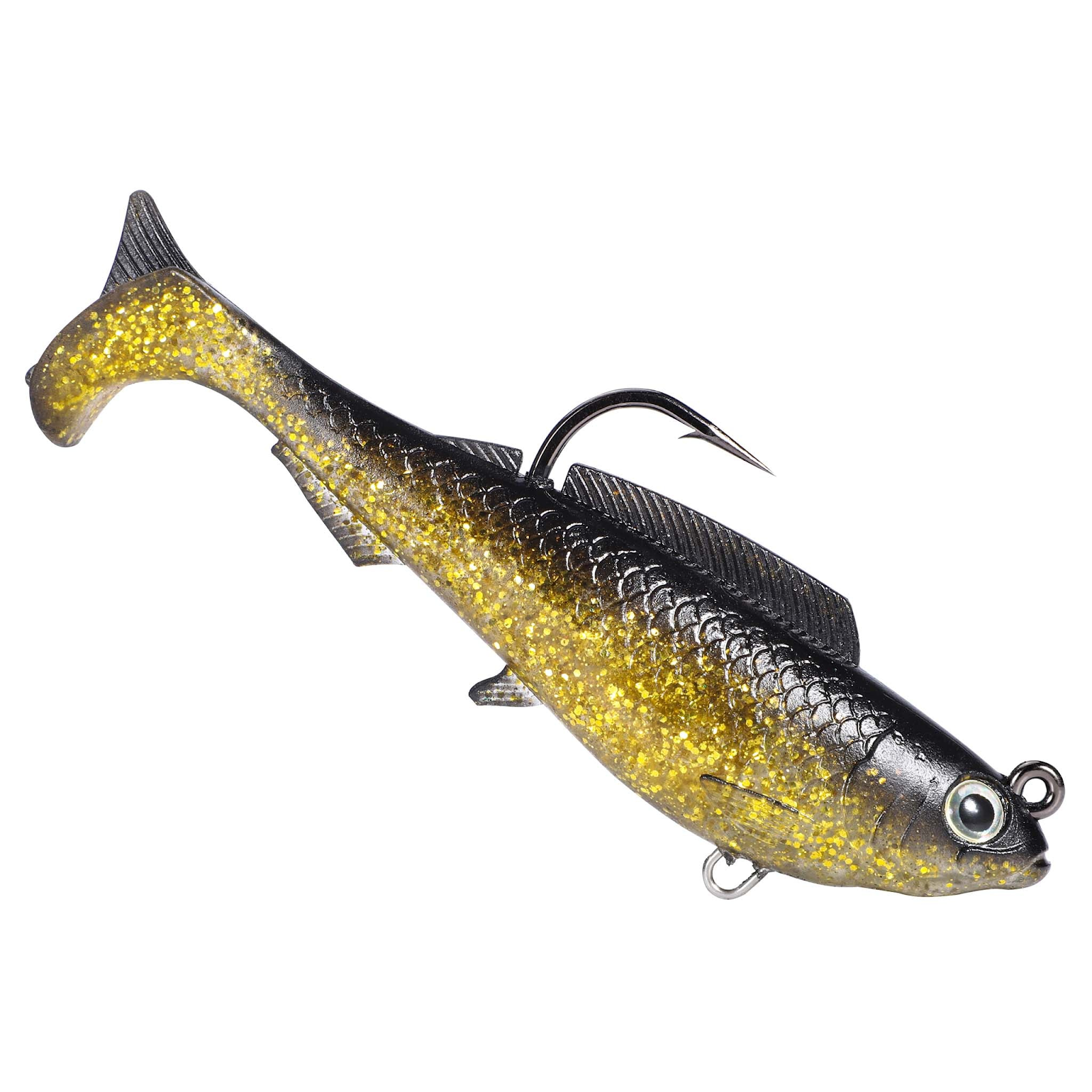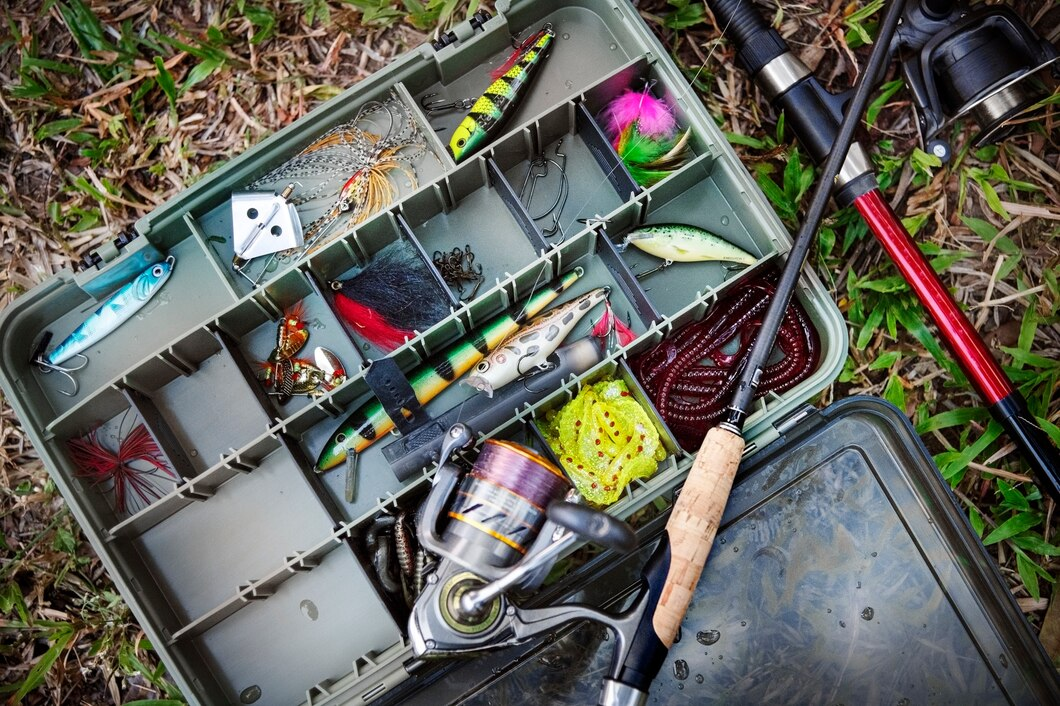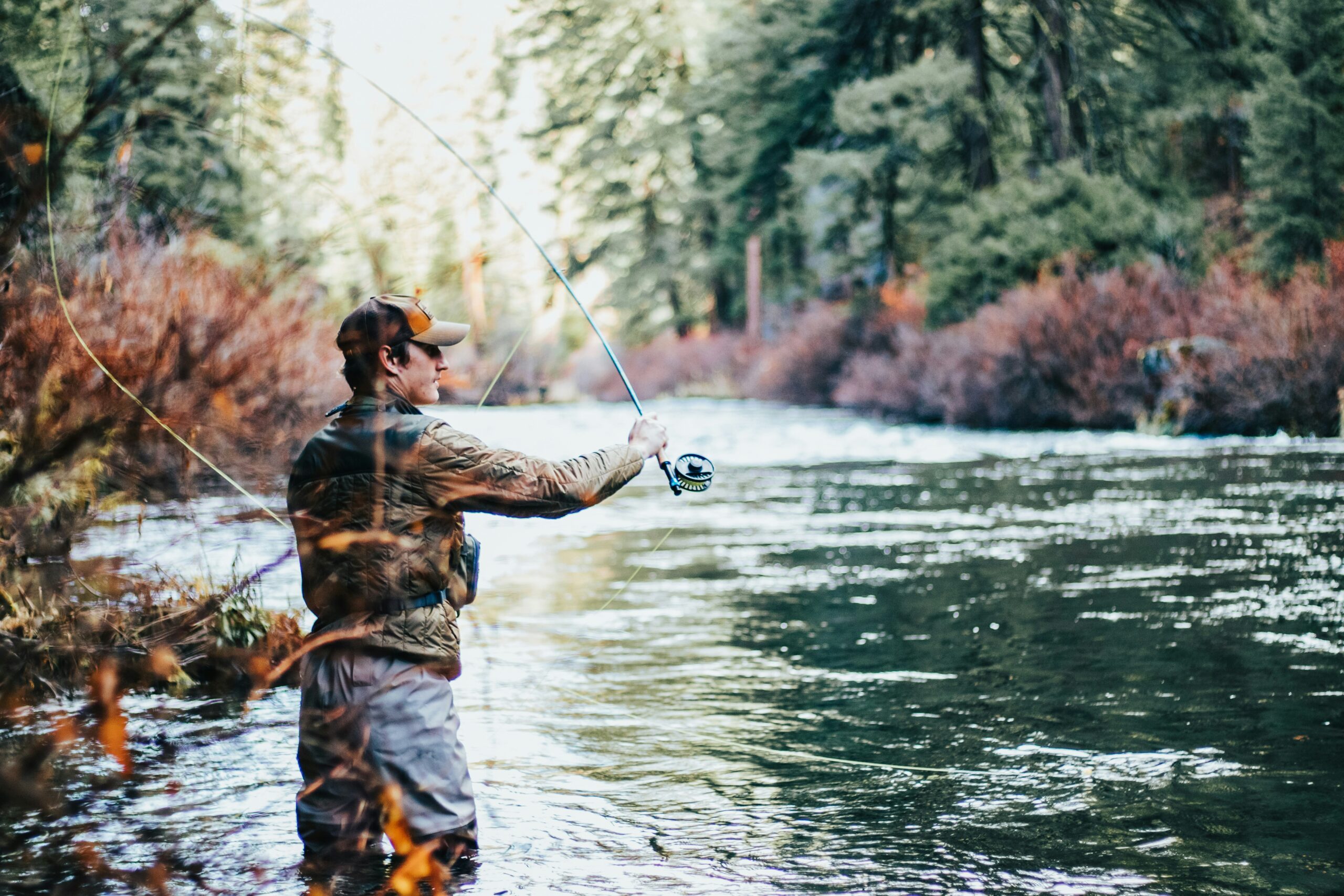Swimbaits are one of the best lures for catching big bass. They mimic real baitfish, making them irresistible to bass looking for an easy meal. If you’re just getting into bass fishing with swimbaits, this guide will help you understand what they are, how to use them, and when to throw them for the best results.

What Are Swimbaits?
Swimbaits are soft or hard-bodied lures designed to look and move like real fish. They come in different sizes, colors, and styles, but all share the same purpose—fooling bass into striking. Unlike other lures that rely on flashy movements or noise, swimbaits work by imitating natural prey.
Many anglers use swimbaits because they target larger bass. Since these lures closely resemble actual baitfish, they’re highly effective in clear water, where bass rely more on sight to hunt.
If you’re looking for a reliable way to improve your bass fishing skills, swimbaits should be in your tackle box. Platforms like Bass Online provide useful resources for both beginners and seasoned anglers looking to refine their techniques.
Types of Swimbaits
Not all swimbaits are the same. Understanding the differences will help you choose the right one for any fishing situation.
1. Soft Swimbaits
Soft swimbaits are made of flexible plastic and have a natural swimming action. They come in two main styles:
- Paddle-tail swimbaits – These have a rounded tail that wobbles as you retrieve them, creating a realistic swimming motion.
- Line-through swimbaits – Designed to let the fishing line pass through the bait, reducing the chance of a bass throwing the hook.
Soft swimbaits can be fished with weighted or weightless hooks, depending on the depth you want to target.
2. Hard Swimbaits
Hard swimbaits are made of wood or plastic and have a segmented or jointed body. They come in different styles:
- Glide baits – These move in a wide, side-to-side motion and are great for drawing in big bass.
- Multi-jointed swimbaits – Designed with multiple segments to create a more fluid swimming action.
- Single-joint swimbaits – These have a single hinge and move in a natural S-curve motion.
Hard swimbaits are often used for targeting trophy bass in clear water conditions.
3. Hollow Body Swimbaits
These lures have a hollow, soft plastic body and resemble live baitfish. They are typically weedless, making them a great choice for fishing around grass, lily pads, and other cover.
How to Choose the Right Swimbait
Picking the right swimbait depends on a few key factors:
1. Water Clarity
- Clear water – Use realistic colors and natural swimming action. Hard swimbaits and translucent soft swimbaits work best.
- Murky water – Choose brighter colors or lures with added vibration, such as paddle-tail swimbaits.
2. Size of the Bait
- Small swimbaits (3-5 inches) – Good for numbers; ideal when bass are feeding on smaller baitfish.
- Large swimbaits (6+ inches) – Best for targeting trophy bass.
3. Depth of the Water
- Shallow water (0-5 feet) – Use weightless or lightly weighted swimbaits.
- Mid-depths (5-15 feet) – Choose slow-sinking or suspending swimbaits.
- Deep water (15+ feet) – Heavily weighted swimbaits work best.
4. Bass Behavior
- If bass are aggressive, use fast-moving swimbaits like paddle-tails or jointed hard baits.
- If they are lethargic, a slow-moving glide bait can trigger a reaction bite.
How to Fish Swimbaits for Bass
Knowing how to retrieve swimbaits effectively will help you land more bass. Here are some techniques to try:
1. Slow and Steady Retrieve
This is the simplest method and works well with both soft and hard swimbaits. Slowly reel in the bait at a consistent speed to mimic a cruising baitfish. This technique is highly effective in clear water.
2. Stop-and-Go Retrieve
Bass often react to erratic movement. Retrieve your swimbait for a few feet, then pause for a second or two before continuing. This makes the bait look like an injured fish, triggering strikes from curious bass.
3. Twitch and Glide
This method is best for glide baits. After casting, make short twitches with the rod tip to make the lure move in a side-to-side motion. Bass find this irresistible, especially in pressured waters.
4. Bottom-Hopping
For deeper water fishing, let your swimbait sink to the bottom, then lift your rod tip to make it jump off the bottom. This imitates a dying baitfish and often triggers reaction bites.
Where to Fish Swimbaits for Bass
Swimbaits work in many different locations, but some areas are more productive than others.
1. Points and Drop-Offs
Bass often stage around underwater points and drop-offs, waiting to ambush prey. Target these areas with slow-sinking or deep-diving swimbaits.
2. Weed Edges and Grass Beds
Fish soft, weedless swimbaits along the edges of grass beds. Bass love hiding in these areas to ambush baitfish.
3. Docks and Bridges
Shade and structure attract bass. Cast swimbaits under docks and along bridge pilings for a chance at some big fish.
4. Open Water
If you see bass chasing baitfish on the surface, throw a hard swimbait and retrieve it at a steady pace. This is a great way to target schooling bass.
Common Mistakes to Avoid
Even experienced anglers make mistakes when using swimbaits. Here’s what to watch out for:
1. Using the Wrong Gear
Swimbaits are heavier than traditional lures. Use a medium-heavy to heavy rod with a strong reel to handle the extra weight.
2. Retrieving Too Fast
Many beginners think they need to reel quickly to attract fish. In most cases, a slower retrieve works better, especially for larger bass.
3. Fishing in the Wrong Conditions
Swimbaits are most effective in clear to slightly stained water. Avoid using them in muddy or highly pressured waters where bass rely more on vibration than sight.
4. Not Matching the Hatch
Pay attention to the size and color of local baitfish. If bass are feeding on small shad, using a large swimbait might not work. Match your lure to what the fish are eating.

Final Thoughts
Fishing for bass with swimbaits is both exciting and rewarding. These lures can help you catch bigger fish and improve your overall fishing skills. Start by choosing the right type of swimbait, practice different retrieval techniques, and fish in productive locations. Avoid common mistakes, and you’ll soon be landing more bass than ever before.
The more time you spend on the water experimenting with swimbaits, the better you’ll get. So grab your gear, hit the lake, and start catching some bass!

